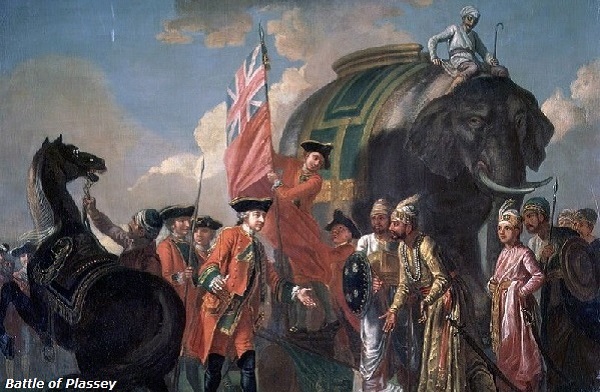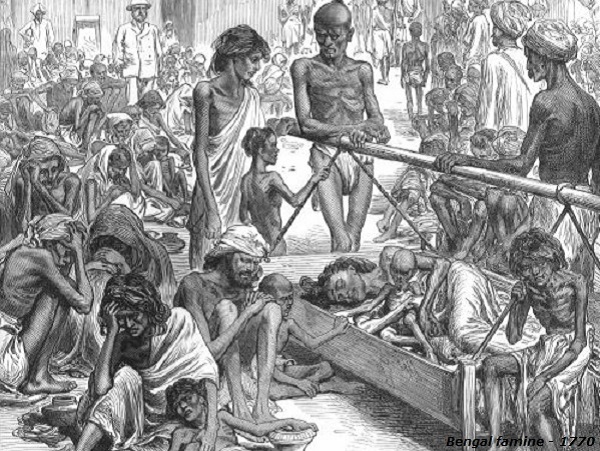
- Modern Indian History Tutorial
- Modern Indian History - Home
- Decline of Mughal Empire
- Bahadur Shah I
- Jahandar Shah
- Farrukh Siyar
- Muhammad Shah
- Nadir Shah’s Outbreak
- Ahmed Shah Abdali
- Causes of Decline of Mughal Empire
- South Indian States in 18th Century
- North Indian States in 18th Century
- Maratha Power
- Economic Conditions in 18th Century
- Social Conditions in 18th Century
- Status of Women
- Arts and Paintings
- Social Life
- The Beginnings of European Trade
- The Portuguese
- The Dutch
- The English
- East India Company (1600-1744)
- Internal Organization of Company
- Anglo-French Struggle in South India
- The British Conquest of India
- Mysore Conquest
- Lord Wellesley (1798-1805)
- Lord Hastings
- Consolidation of British Power
- Lord Dalhousie (1848-1856)
- British Administrative Policy
- British Economic Policies
- Transport and Communication
- Land Revenue Policy
- Administrative Structure
- Judicial Organization
- Social and cultural Policy
- Social and Cultural Awakening
- The Revolt of 1857
- Major Causes of 1857 Revolt
- Diffusion of 1857 Revolt
- Centers of 1857 Revolt
- Outcome of 1857 Revolt
- Criticism of 1857 Revolt
- Administrative Changes After 1858
- Provincial Administration
- Local Bodies
- Change in Army
- Public Service
- Relations with Princely States
- Administrative Policies
- Extreme Backward Social Services
- India & Her Neighbors
- Relation with Nepal
- Relation with Burma
- Relation with Afghanistan
- Relation with Tibet
- Relation with Sikkim
- Relation with Bhutan
- Economic Impact of British Rule
- Nationalist Movement (1858-1905)
- Predecessors of INC
- Indian National Congress
- INC & Reforms
- Religious & Social Reforms
- Religious Reformers
- Women’s Emancipation
- Struggle Against Caste
- Nationalist Movement (1905-1918)
- Partition of Bengal
- Indian National Congress (1905-1914)
- Muslim & Growth Communalism
- Home Rule Leagues
- Struggle for Swaraj
- Gandhi Assumes Leadership
- Jallianwalla Bagh Massacre
- Khilafat & Non-Cooperation
- Second Non-Cooperation Movement
- Civil Disobedience Movement II
- Government of India Act (1935)
- Growth of Socialist Ideas
- National Movement World War II
- Post-War Struggle
- Clement Attlee’s Declaration
- Reference & Disclaimer
The British Conquest of India
The British conquest India strategically i.e. one after another.
The British Occupation of Bengal
The beginning of British political influence over India may be traced to the battle of Plassey in 1757, when the English East India Company's forces defeated Siraj-ud-Daulah, the Nawab of Bengal.
As result of the Battle of Plassey, the English proclaimed Mir Jafar the Nawab of Bengal and set out to gather the reward i.e. the company was granted undisputed right to free trade in Bengal, Bihar, and Orissa.

The East Company received the zamindari of the 24 Parganas near Calcutta. Mir Jafar paid a sum of Rs 17,700,000 as compensation for the attack on Calcutta and the traders of the city.
The battle of Plassey was of immense historical importance, as it paved the way for the British mastery on Bengal and eventually on the whole of India.
The victory of Plassey enabled the Company and its servants to amass untold wealth at the cost of the helpless people of Bengal.
Mir Qasim realized that if these abuses continued he could never hope to make Bengal strong or free himself of the Companys control. He therefore took the drastic step of abolishing all duties on internal trade.
Mir Qasim was defeated in a series of battles in 1763 and fled to Avadh where he formed an alliance with Shuja-ud-Daulah, the Nawab of Avadh, and Shah Alam II, the fugitive Mughal Emperor.
The three allies clashed with the Companys army at Buxar on 22 October 1764 and were thoroughly defeated.
The result of Buxar battle firmly established the British as masters of Bengal, Bihar, and Orissa and placed Avadh at their mercy.
Dual Administrative System in Bengal
The East India Company became the real master of Bengal from 1765. Its army was in sole control of its defence and the supreme political power was in its hands.
The Nawab of Bengal became dependent for his internal and external security on the British.
The virtual unity of the two branches of Government under British control was signified by the fact that the same person acted in Bengal as the Deputy Diwan on behalf of the Company and as Deputy Subedar on behalf of the Nawab. This arrangement is known in history as the Dual or Double Government.
Dual system of administration of Bengal held a great advantage for the British: they had power without the responsibility.
British controlled the finances of Bengal and its army directly and its administration indirectly.
The Nawab and his officials had the responsibility of administration, but not the power to discharge it.
The consequences of double government for the people of Bengal were disastrous: neither the Company nor the Nawab cared for their welfare.
In 1770, Bengal suffered from a famine which in its effects proved one of the most terrible famines known in human history.

Bengal famine killed millions of people and nearly one-third of Bengals population fell victim to its ravages. Though the famine was due to failure of rains, but its effects were heightened by the Companys policies.